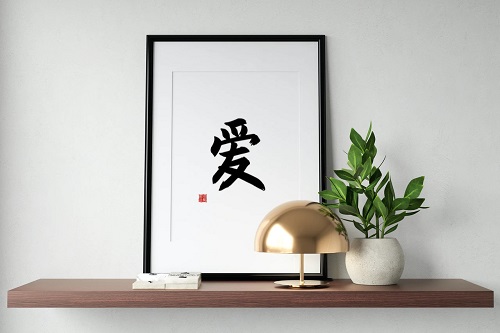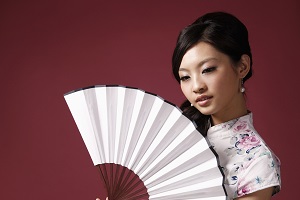The durable bamboo plant has been used for centuries as building material for houses and structures. It is also a raw material for the manufacture of paper. Some parts of it is used as medicine.
Bamboo shoots can also be used to cook up a delicious delicacy in Chinese dishes.
In Chinese poetry, many renown artistes have also referenced the bamboo plant as an essential item that people cannot survive without.
In symbolism, the resilience of bamboos are regarded to represent longevity due to it’s perseverance to not just survive, but flourish as an evergreen plant throughout the 4 seasons.
On top of that, it’s hollow body and drooping leaves does not mean that it lacks substance, but as a symbol of modesty.
For Confucius, the attributes of bamboo is likened to the integrity of man. Upright and resilient, while remaining graceful.
How new seedlings tend to sprout close to their parent plant also associates it with the characteristics of filial piety.

Due to it’s ability to bend without breaking, it was said that the plant never breaks or get uprooted even in a severe thunder storm.
While there are many species of bamboo and varieties of it with each species, every type of bamboo is symbolic of longevity and good health.
The mandarin word for bamboo is pronounced zhu (竹), which sounds a little similar to the word zhu (祝). With the latter meaning “to wish”. So paintings with this plant are often used as gifts to wish the receiver good luck in aspects of life.
Legend of bamboo
The reference to bamboo is widespread in various legends and stories.
One of which illustrates a man named Meng Zong (孟宗), who dug for bamboo shoots during winter to feed his mother. His tears melted the icy snow which touched the gods and they sent him more shoots to dig for.
In paintings of children playing with fireworks made with bamboo, it communicates the message of wishing for peace to the recipient. This also has connotations with peace from the mythical beast Nian as burning bamboo creates a crackling sound that scares away the monster.
When contained in a vase, it signifies safety.
Spotted bamboo represents love and fidelity when gifted to a couple.
Spiny bamboo is related to the luck of old age.
When depicted with plums, it means marital bliss (竹梅双喜). Sometimes this is accompanied by two magpies for newly weds. The plum can at times be substituted by other plants such as apricot or apple blossoms.
With plums and pine trees, it serves as a representation of the three friends in winter.
It is also one of the famous four noble plants together with plum blossom, chrysanthemum and orchid. They are meant to symbolize the 4 seasons.
Solid stemmed bamboo have connotations with living a life free of illnesses.
Illustrated with stones and rocks, it is meant to represent the ideals and virtues of a Confucian.
While being drawn with two types of flowers and two types of birds will symbolize an abundance of the three blessings consisting of fortune, longevity and progeny.
With a sparrow, it is a reference to one of the cultural pairings of flowers and birds (花鸟).
A trio of bamboo, narcissus and lingzhi mushrooms represent birthday greetings from immortals. This is sometimes accompanied by peaches to convey longevity.
A tiger with bamboo around it signifies persevering with courage.
Even the Goddess of Mercy is often illustrated to hold a bamboo twig as an emblem.
As one can tell, the reputation of the bamboo plant in Chinese folklore is one to be revered. And the nickname lucky bamboo is not for no particular reason.
Modern use of bamboo
The versatility of bamboo and it’s natural characteristics have made it one of the popular materials used for recycle-ware such as reusable straws, chopsticks, plates, cutlery, etc.
It is often used for a variety of spa products as well as products that promote well-being.
The growing trend of using it as a material for consumer products is not slowing down. Even undergarment can be made using it.
Bamboo flooring with a high presence in Bali, is also growing in popularity, especially for homeowners who are creating a resort interior design for a particular room.
The wind chime, which is a popular feng shui item used as enhancers and cures can also be found made with bamboo.
Placement of bamboo for feng shui
When lucky bamboo is specifically mentioned, it usually means a group of bamboo shoots organized in a tower shape held together by a red string. And when the top ends spiral, it is what the Chinese call the luck-changing bamboo (转运竹).
When people suddenly run into bad luck, the luck changing bamboo is often purchased on impulse.
Because the bamboo plant is hardy and thrives under a diverse set of conditions, it is actually not that difficult to grow them in your own garden.
If you do fail to grow them or simply too impatient to see them grow from baby shoots to lucky bamboo trees, they can be easily purchased at a horticulture store.
They would make great hedges as they don’t require much attention except occasional pruning.
Creating a bamboo hedge on the left of the house can be akin to erecting the green dragon on the left as in regard to the 4 celestial animals in landscape feng shui.
As outdoor potted plants, they are best placed near the front part of the house or even beside the main front door.
Inside the house, because of it’s wood elemental nature, they can be placed at the east sector.
When placed at the southeast, it can help enhance romance luck and academic success. It would therefore be ideal for the kids if there is a study room in the southeast with a painting of the plant.
When placed at the south, it can bring enhanced luck for recognition at work.
However, it must be noted that they are often tied with a red string to add a presence of yang fire energy.
They are sometimes also incorporated into water features.
As paintings, it is better to get them in leafy bamboo stalks, and they can also be hung in wealth areas to signify longevity in successful career.
Numbers tend to be associated with the potency of the energy bamboo plants bring.
With this in mind, indoor paintings and pictures of the plant are best when they contain 6, 7, 8 or 9 of them as these are the lucky numbers with feng shui in general.
Whatever you do, avoid 2, 3, 5.
According to the 9 stars of flying star feng shui, 2 and 5 are associated with illness and misfortune, while 3 is associated with conflicts and problems with authority.
When bamboo wind chimes are used as a remedy against negative energy or an energy enhancer in flying star feng shui, the number of rods are best when they correspond with the star number.
For example, if you are trying to enhance the white star 6, use a wind chime with 6 rods.
Because they don’t make sounds like metal rod wind chimes, they lack yang energy. To remedy this, red strings are tied to them when yang energy is required.
Other than that, because they can come in small as well as big sizes, they can be used as a defense screen to protect against negative energy emitting from inside or outside the house.
This would be even more effective if the intruding energy is of a water element base as wood weakens water.
For example, a window that opens up with a view of a sharp corner of an adjacent building, or a protruding pillar pointing at the sofa set in the living room.
Lastly, when an overhead beam is present and there is no way for residents to avoid sitting or sleeping underneath it, bamboo stems can be used to counter the downward energy by hanging them like wind chimes.















